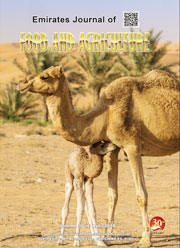POTASSIUM DYNAMICS IN THREE ALLUVIAL SOILS DIFFERING IN CLAY CONTENTS
DOI:
https://doi.org/10.9755/ejfa.v25i1.15395Keywords:
Alluvial soils, Clay, Electro-ultra-filtration, K -dynamics, K -fixing soilsAbstract
Despite the presence of a huge amount of potassium (K+ ) in the soil, most of the soils are deficient in plant available K+ . A large amount of the K+ is fixed by clay minerals present in such soils and cannot be taken up by plants to achieve optimum plant growth. In such type of soils, large amount of K+ fertilizers are required for optimum plant growth, as plants do not respond enough to a normally recommended K+ fertilization. Vermiculite clay minerals can fix an enormous amount of applied K+ , which becomes slowly available to the plants. The K+ dynamics in such soils are valuable to recommend K+ fertilizer requirements for sustainable nutrient management. We analyzed the K+ dynamics of three alluvial soils, i.e Kleinlinden, Giessen and Trebur, collected from Germany and found that the soils with vermiculite and smectite clay minerals have more K+ - fixing ability than soils dominated by illite clay minerals. However, as the K+ concentration decreased in the soil solution, smectite-dominant soils may easily release fixed K+ due to lower particle-charge, whereas vermiculite and illite dominant soils may not release fixed K+ easily. Moreover, ammonium exchangeable K+ , non-exchangeable K+ , total K+ and K+ -fixing capacity of these soils are directly proportional to the soil clay contents. While recommending K+ fertilizers clay contents and the type of clay minerals is not considered and recommended K+ fertilizers sometimes do not response plant growth enhancement. Therefore potassium fertilizer should be recommended by taking into consideration the type and amount of clay minerals present in the soil.










 .
. 